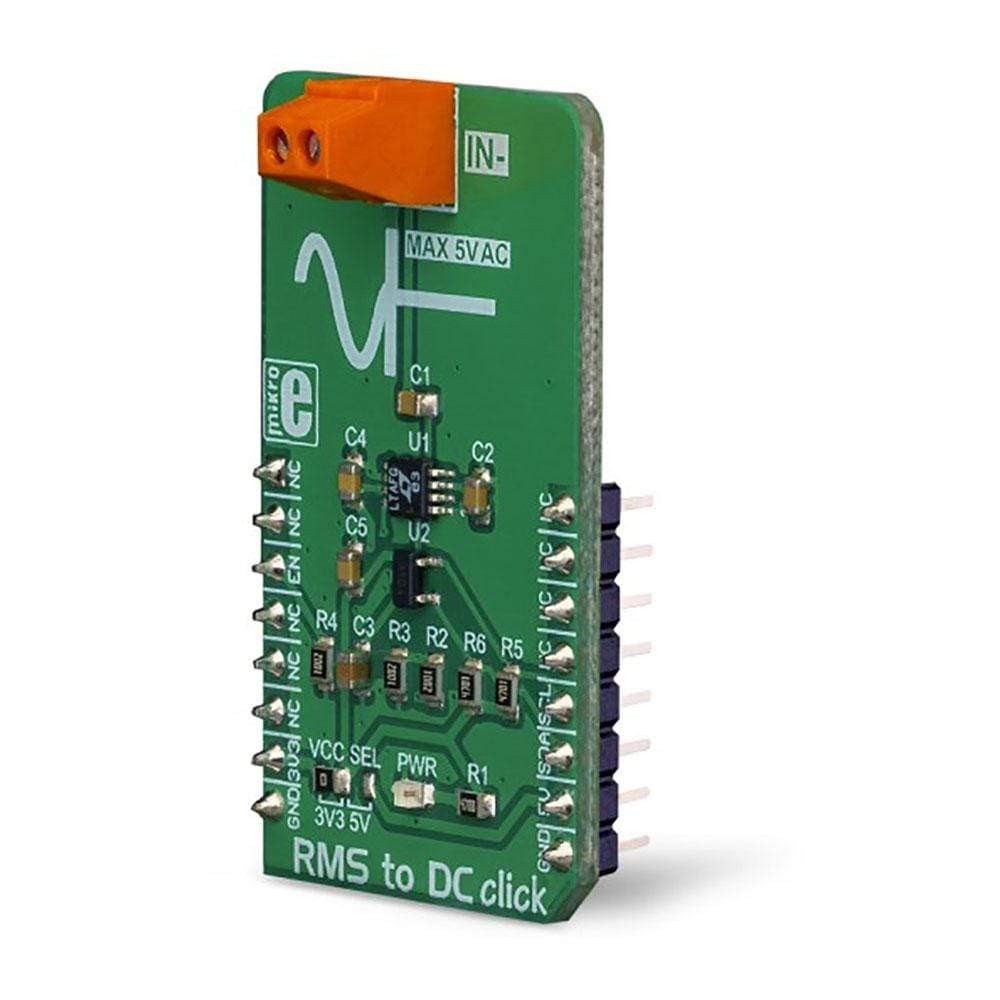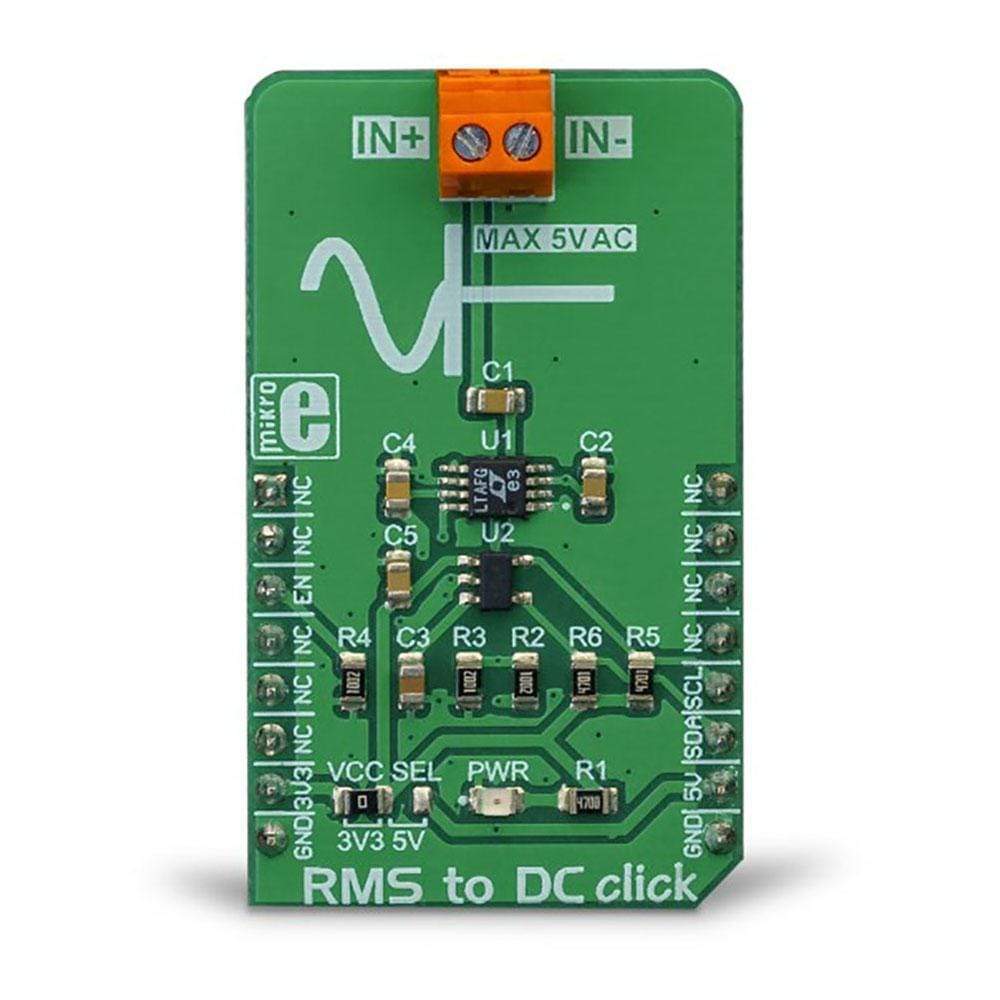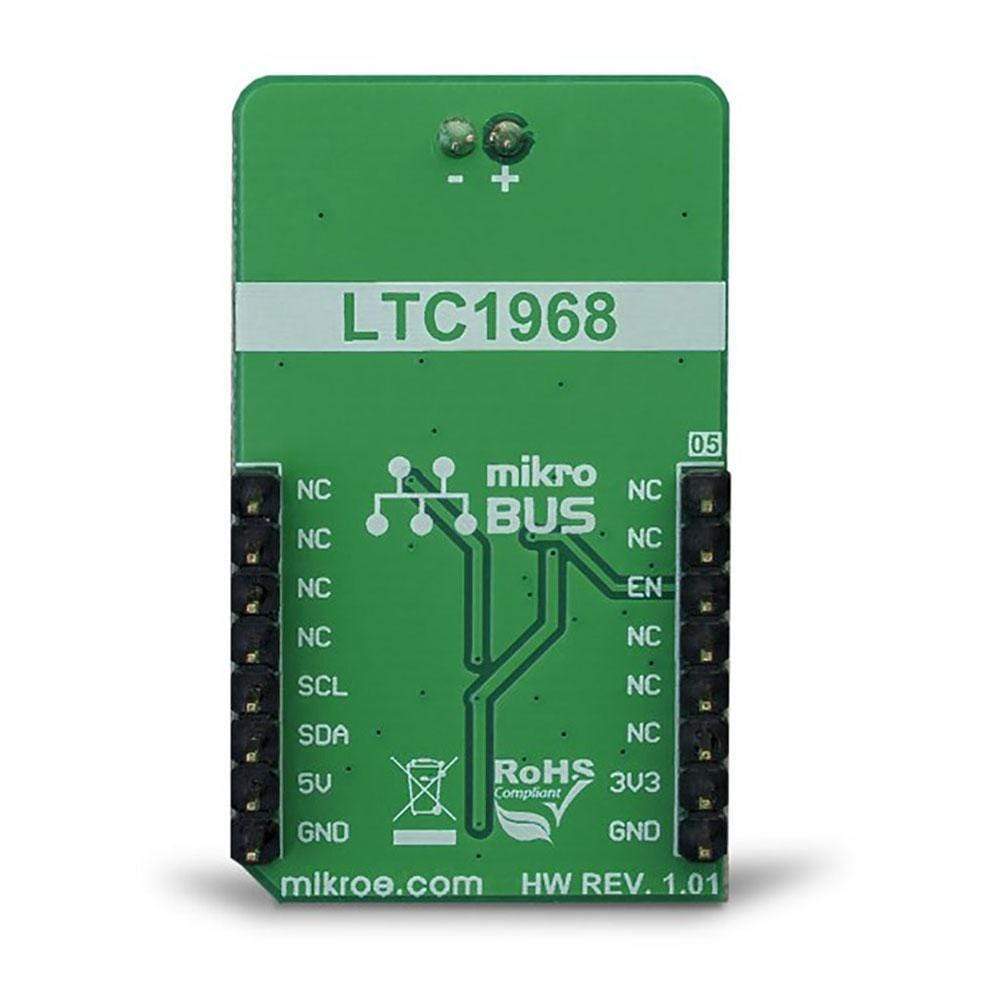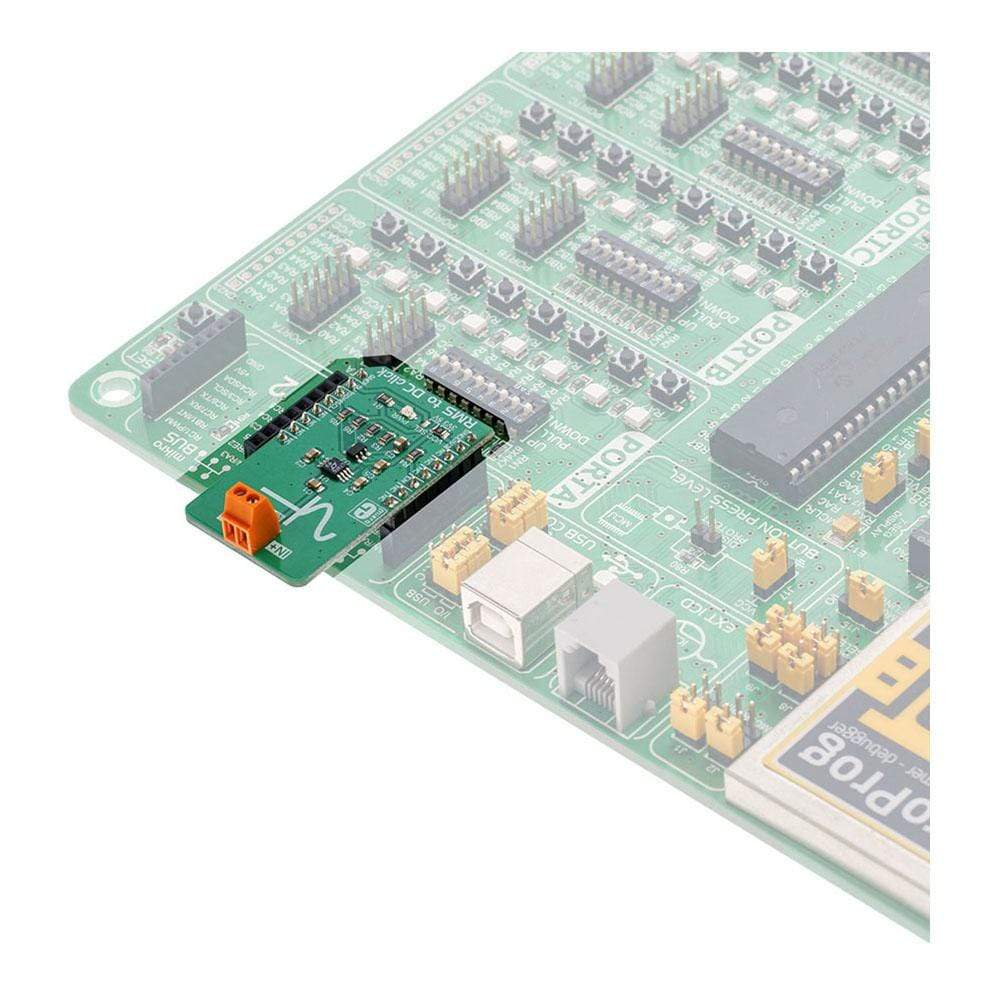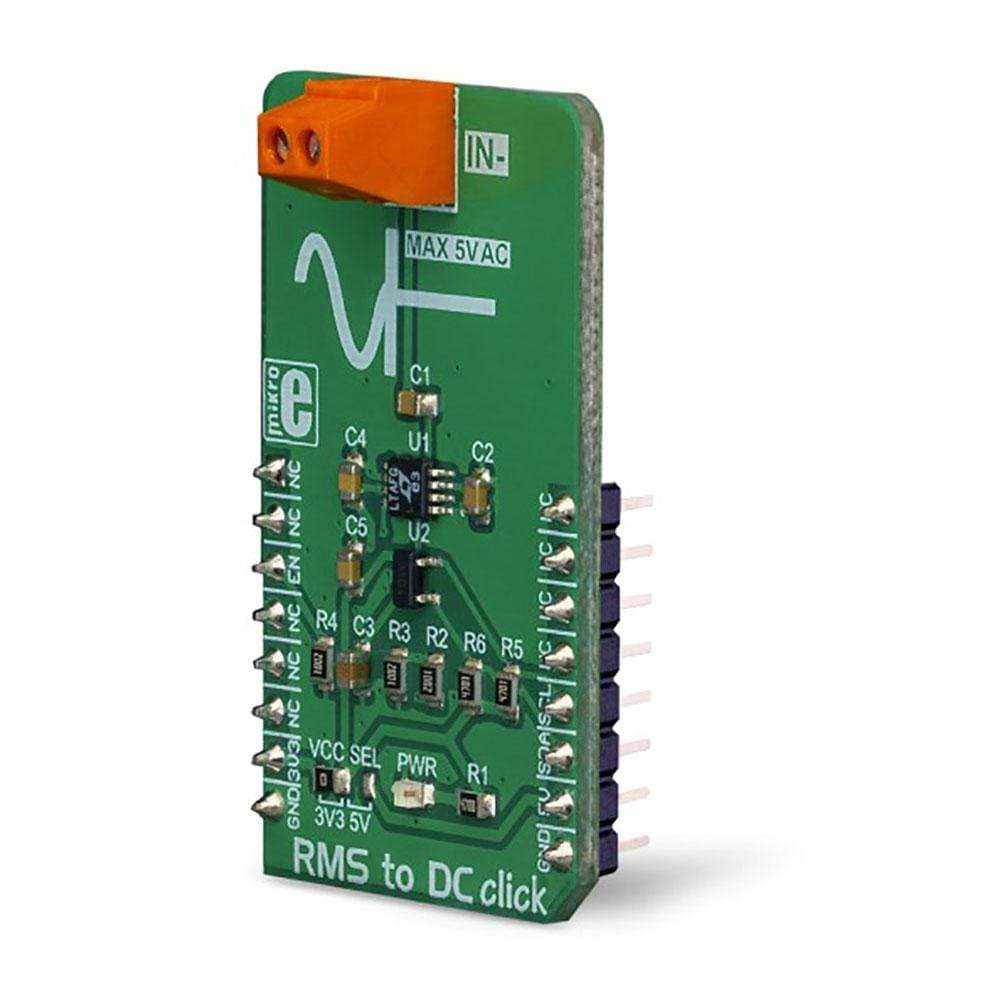
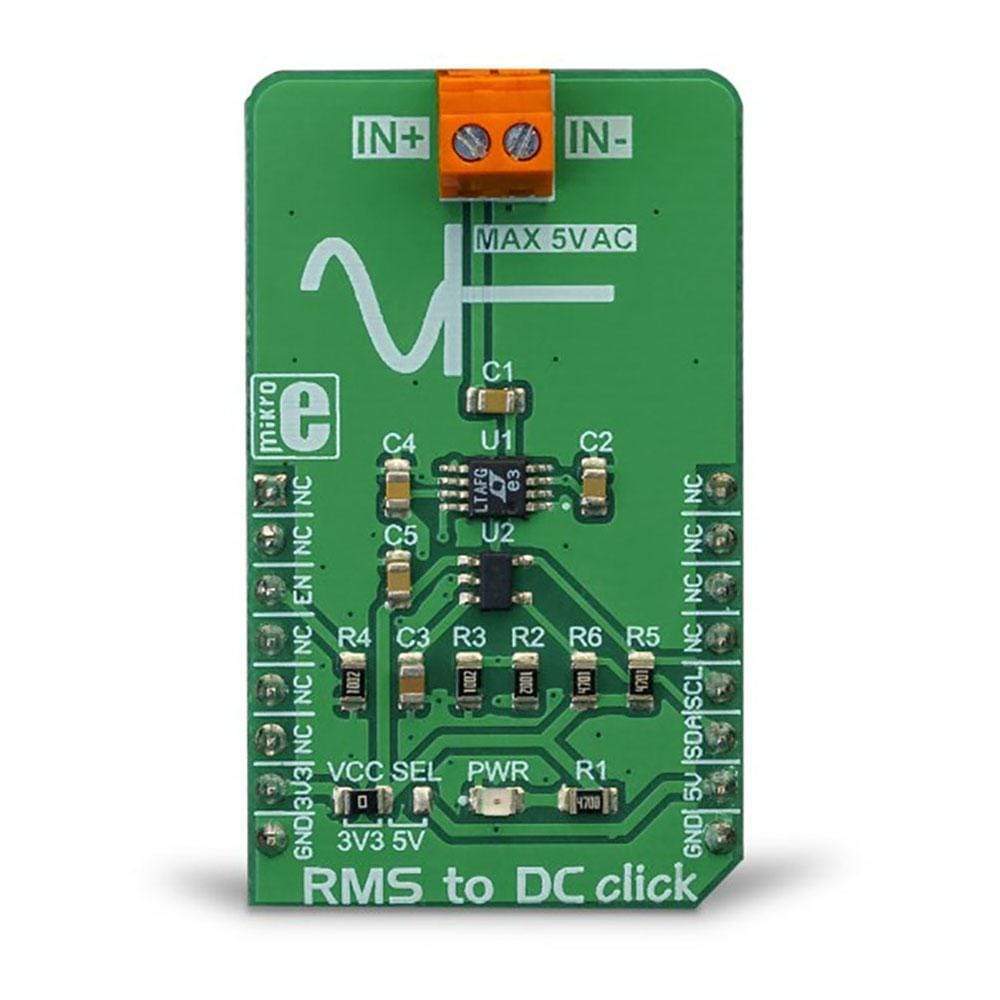
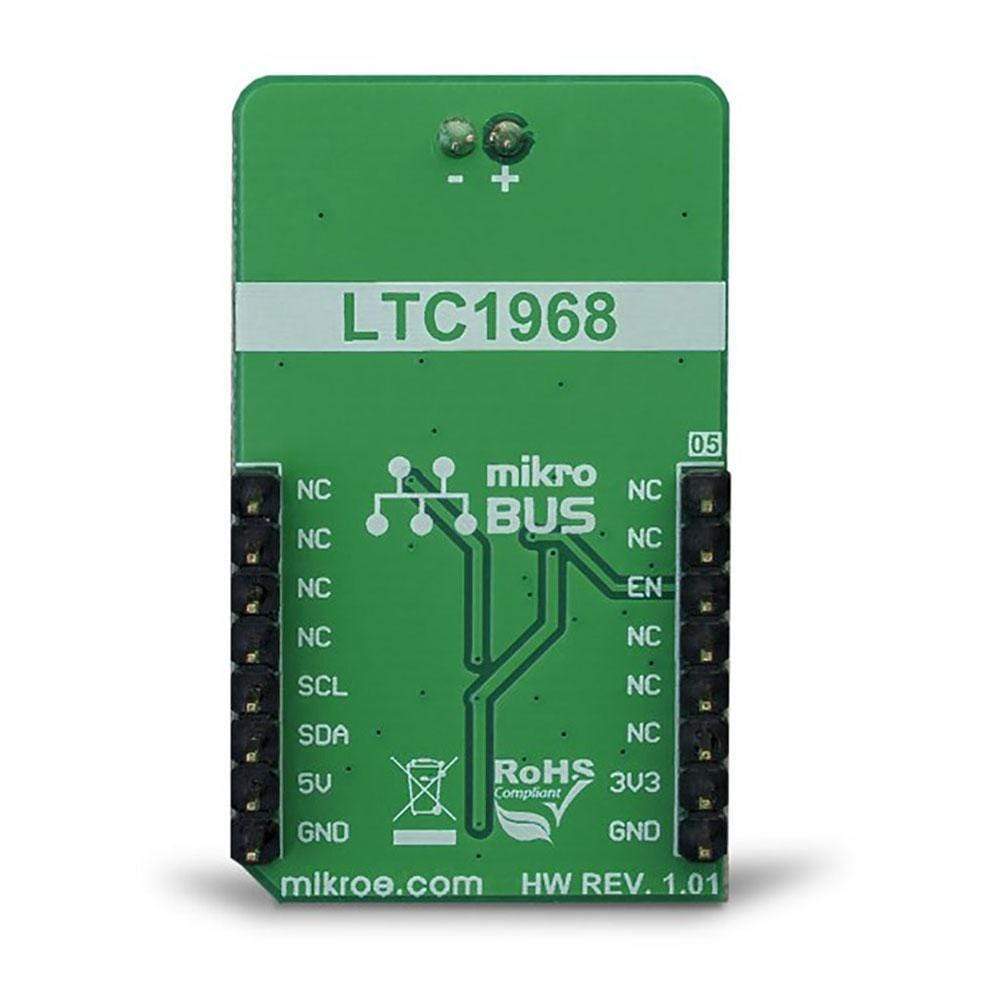
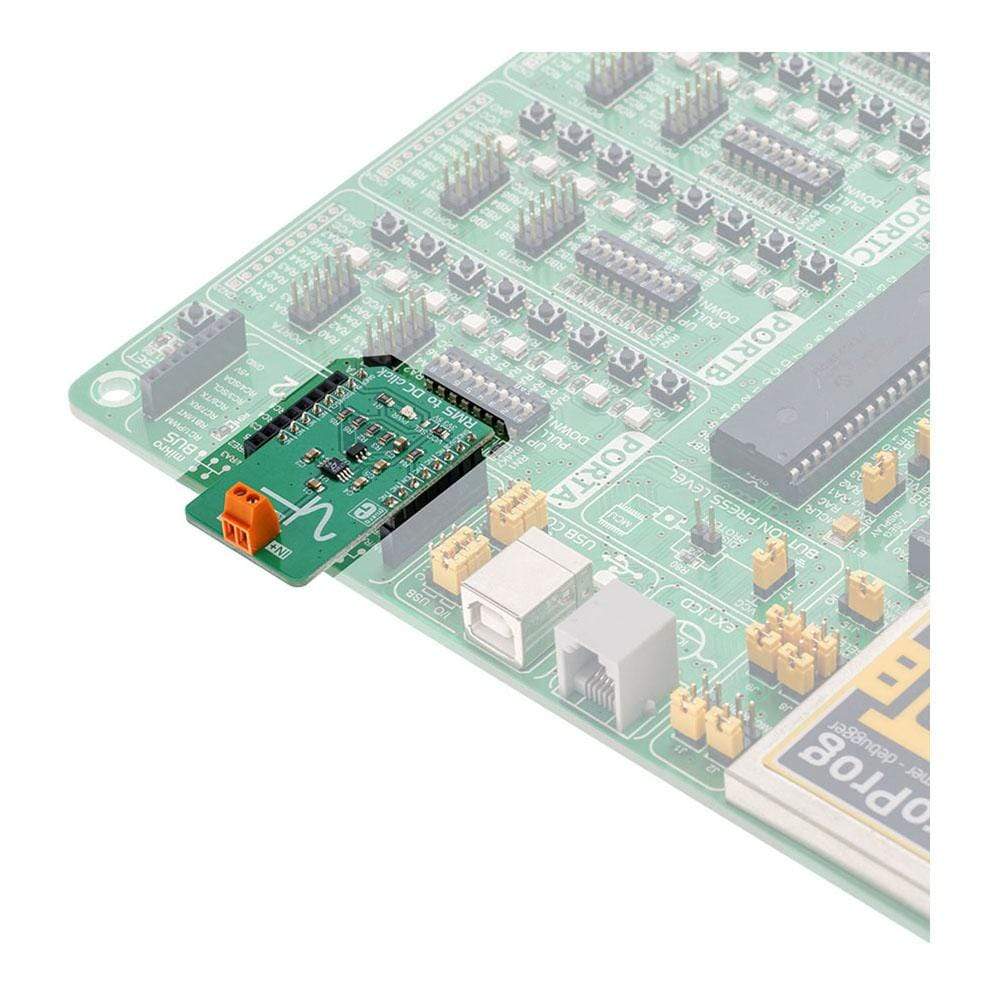
Overview
The RMS to DC Click Board™ is used to convert the RMS of the input signal into a DC voltage, with a value directly readable over the I2C interface. The Click Board™ is equipped with the LTC1968, an RMS-to-DC converter IC, which outputs an analog voltage depending on the RMS value of the input signal. The key feature of this IC is its very good linearity of the output voltage with respect to the RMS of the input signal. This is due to the innovative delta-sigma computational technique, used in this IC. Besides high linearity, this IC also features a high accuracy, high signal bandwidth, and good thermal stability. It can be used to accurately measure the RMS value of various alternating signals.
Downloads
Featuring a very high linearity, a rail-to-rail common mode voltage, a true RMS-to-DC conversion with a minimum number of external components required, an excellent linearity that allows direct application with no compensation elements required, a very wide signal bandwidth, and more, the RMS to DC Click Board™ is an ideal solution for development of various true RMS digital multimeter applications, panel meters and gauges, AC + DC measurement applications, a true RMS measurement of an audio signal and other similar applications that require accurate RMS value readings.
How Does The RMS to DC Click Board™ Work?
The RMS to DC Click Board™ is based around the LTC1968, a precise RMS-to-DC converter with the wide input signal bandwidth, from the Analog Devices. This IC uses the proprietary delta-sigma computational techniques to achieve a highly linear DC voltage output at its output in respect with the RMS of the input signal. The RMS is typically associated with the alternating signals. This Click board™ is capable of measuring the RMS of both bipolar and unipolar periodically alternating signals, over a wide range of frequencies.
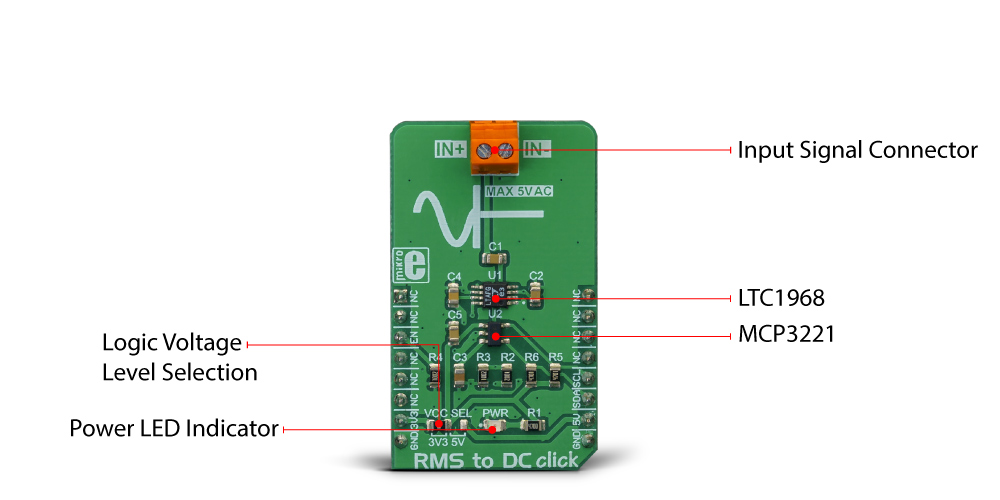
The RMS or Root Mean Square is used to describe the power of the input signal: the RMS value of current is equal to a DC current value that would produce the same heat dissipation on the resistive load. Therefore, it is often important to know the RMS value of the signal. RMS to DC click allows measuring of the RMS value of a periodically repetitive signal.
As mentioned before, the LTC1968 provides a highly accurate and linear conversion of the RMS value at its input, to a constant voltage at its output. The constant voltage directly depends on the RMS value of the input signal, thanks to the innovative sigma-delta conversion technique of the LTC1968, which is described in details within the LTC1968 datasheet. Due to a high output voltage linearity, no compensation elements are required, except a single filtering capacitor. The output voltage of the LTC1968 is then fed to an analog-to-digital converter (ADC). For the voltage-to-digital conversion purposes, RMS to DC click utilizes the MCP3221, a 12-bit ADC with I2C interface, from Microchip. This ADC uses the voltage at its power supply pin as a conversion reference. This simplifies the Click board™ schematics, allowing the reference voltage to be changed along with the power supply voltage of the ADC.
The communication logic voltage level, as well as the ADC power supply voltage, can be changed by switching the SMD jumper labeled as VCC SEL to either 3V3 position or 5V position. Note, however, that this will cause the reference ADC voltage to change accordingly. This should be accounted for when calculating the output value.
The input signal can be connected to the two-pole input signal connector. The LTC1968 IC accepts both bipolar and unipolar signals at its input, thanks to the differential input. The negative differential input is used as the reference input on this Click board™, therefore it is offset at 2.5V in respect to GND, while the positive differential input is decoupled by a 100nF capacitor, allowing only the AC component of the input signal to be processed. This allows signal input within the ±2.5 range to be applied.
The RMS to DC Click Board™ also features an #ENABLE pin, used to enable or disable the LTC1968 when used in power sensitive applications. This pin is pulled to a LOW logic level by a resistor, so the IC is enabled by default. The user can disable the IC by pulling the #ENABLE pin to a HIGH logic level. This pin is routed to the CS pin, and it is labeled as EN on this Click board™.
Due to an overall circuit simplicity allowed by the LTC1968 IC, the ADC directly outputs the RMS value of the input signal. However, the RMS to DC Click Board™ is supported by a mikroSDK compatible library, which contains functions that simplify the development even further, allowing the RMS data to be read in almost a single line of code.
SPECIFICATIONS
| Type | Measurements |
| Applications | The RMS to DC Click Board™ is an ideal solution for development of various true RMS digital multimeter applications, panel meters and gauges, AC + DC measurement applications, a true RMS measurement of an audio signal and other similar applications that require accurate RMS value readings. |
| On-board modules | LTC1968, a precise RMS-to-DC converter with the wide input signal bandwidth, from the Linear Technology division of Analog Devices; MCP3221, a 12-bit ADC with I2C interface, from Microchip. |
| Key Features | It offers an excellent linearity that allows direct application with no compensation elements required, a rail-to-rail common mode voltage, a true RMS-to-DC conversion with a minimum number of external components, a good thermal stability, a very wide signal bandwidth, and more. |
| Interface | GPIO,I2C |
| Compatibility | mikroBUS |
| Click board size | M (42.9 x 25.4 mm) |
| Input Voltage | 3.3V or 5V |
PINOUT DIAGRAM
This table shows how the pinout of the RMS to DC Click Board™ corresponds to the pinout on the mikroBUS™ socket (the latter shown in the two middle columns).
| Notes | Pin |  |
Pin | Notes | |||
|---|---|---|---|---|---|---|---|
| NC | 1 | AN | PWM | 16 | NC | ||
| NC | 2 | RST | INT | 15 | NC | ||
| LTC1968 Chip Enable | EN | 3 | CS | RX | 14 | NC | |
| NC | 4 | SCK | TX | 13 | NC | ||
| NC | 5 | MISO | SCL | 12 | SCL | I2C Clock | |
| NC | 6 | MOSI | SDA | 11 | SDA | I2C Data | |
| Power Supply | 3V3 | 7 | 3.3V | 5V | 10 | 5V | Power Supply |
| Ground | GND | 8 | GND | GND | 9 | GND | Ground |
ONBOARD SETTINGS AND INDICATORS
| Label | Name | Default | Description |
|---|---|---|---|
| PWR | PWR | - | Power LED indicator |
| JP1 | VCC SEL | Left | Power supply voltage selection: left position 3.3V, right position 5V |
| VIN | IN+,IN- | - | Input signal connector |
| General Information | |
|---|---|
Part Number (SKU) |
MIKROE-3311
|
Manufacturer |
|
| Physical and Mechanical | |
Weight |
0.02 kg
|
| Other | |
Country of Origin |
|
HS Code Customs Tariff code
|
|
EAN |
8606018714247
|
Warranty |
|
Frequently Asked Questions
Have a Question?
Be the first to ask a question about this.

